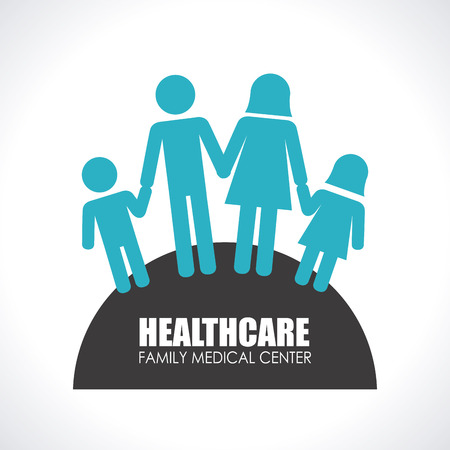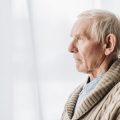Introduction to Falls Among Older Adults in the UK
The United Kingdom is home to an increasingly ageing population, a demographic shift that brings both opportunities and challenges for society. Among these challenges, the issue of falls in older adults stands out as a significant public health concern. According to the NHS, around one in three adults over the age of 65 will experience at least one fall each year, with this figure rising to one in two among those aged 80 and above. These numbers are more than just statistics—they represent thousands of families coping with the aftermath of falls, which can lead to serious injuries such as hip fractures, head trauma, and a devastating loss of confidence and independence. The impact extends beyond individuals, affecting carers, families, and placing substantial pressure on NHS resources. In fact, falls account for over 4 million hospital bed days and cost the NHS more than £2 billion annually. By understanding the prevalence and far-reaching consequences of falls within our communities, we can begin to appreciate why prevention is not just important but essential for ensuring quality of life as we age in the UK.
2. Understanding Risk Factors in the British Context
When it comes to fall prevention among older adults in the UK, appreciating the unique blend of risk factors rooted in our local lifestyle, health patterns, and environments is crucial. British seniors face certain distinct challenges—from the layout of traditional terraced housing to our famously unpredictable weather—that influence their likelihood of experiencing a fall.
Lifestyle Factors
Physical activity levels among older adults in the UK can vary widely, often shaped by access to community facilities and safe outdoor spaces. Many may rely on walking as their primary form of exercise, particularly in rural or semi-urban areas where public transport can be limited. However, uneven pavements, narrow footpaths, and insufficient street lighting present additional hazards. Social isolation, unfortunately common in British society especially during winter months, can also lead to decreased mobility and increased vulnerability.
Health Considerations
Chronic health conditions such as arthritis, diabetes, and cardiovascular disease are prevalent among the UK’s ageing population. The National Health Service (NHS) provides excellent support, but waiting times for mobility aids or physiotherapy can inadvertently increase risk. In addition, medication regimens—often complex for older Britons—may cause dizziness or drowsiness, further compounding fall risk.
Environmental Factors Unique to the UK
The British climate itself poses unique challenges. Wet and icy conditions are frequent culprits behind slips outdoors and even inside homes with old flooring. Traditional British homes—characterised by steep staircases, narrow hallways, and thick carpets—can be both comforting and hazardous. Furthermore, many older adults live in period properties that may lack modern safety features.
Key Risk Factors Among Older Adults in the UK
| Category | Specific Risks |
|---|---|
| Lifestyle | Limited physical activity, social isolation, reliance on walking |
| Health | Chronic illnesses (arthritis, diabetes), side effects from multiple medications |
| Environment | Wet/icy weather, uneven pavements, traditional home layouts |
Tackling These Challenges Together
By recognising these uniquely British risk factors, families and carers can take targeted steps—like arranging regular check-ins during colder months or assessing home safety features—to reduce falls. Ultimately, understanding our context is the first step towards effective prevention strategies tailored for older adults across the UK.

3. Consequences of Falls: Beyond Physical Injury
When we talk about falls among older adults, it’s tempting to focus only on the immediate physical injuries—broken hips, sprained wrists, or bruises. However, the impact of a fall ripples far beyond these visible wounds, especially here in the UK where our NHS is already under considerable pressure. Every year, thousands of hospital beds are filled by older people recovering from falls, which not only stretches NHS resources but also means longer waiting times and delayed treatments for others.
The consequences don’t stop at healthcare services. For many older Britons, a single fall can mean the end of independent living. It often leads to a loss of confidence and a fear of falling again, making everyday activities—from popping down to the local shop to meeting friends for a cuppa—feel daunting or even impossible. This loss of independence can be devastating, eroding self-esteem and taking away cherished routines.
Let’s not overlook the emotional toll either. Families and carers are deeply affected too. There’s the worry and stress about their loved one’s wellbeing, plus the practical challenges of providing extra support or navigating the complex world of social care in the UK. The reality is that a fall doesn’t just hurt physically; it can set off a chain reaction of emotional and social difficulties for everyone involved.
Understanding these broader effects makes it clear why fall prevention isn’t just a medical issue—it’s a community concern that impacts individuals, families, and the very fabric of our health and social care systems.
4. Cultural Attitudes and Barriers to Fall Prevention
In the UK, cultural attitudes towards ageing and independence play a significant role in shaping how older adults perceive fall prevention. Many British older adults value self-reliance and dignity, which can sometimes make it challenging to acknowledge vulnerability or accept support. This mindset can lead to hesitation in discussing fall risks with family or health professionals, and a reluctance to adopt preventive measures such as mobility aids or home modifications.
Stigma Around Asking for Help
The notion of “not wanting to be a burden” is deeply rooted in British culture, particularly among the older generation who experienced post-war values of resilience and stoicism. Unfortunately, this can translate into a stigma around asking for help or using devices like walking frames, grab rails, or alarm systems. Some may fear being perceived as frail or losing their independence, even though these tools are designed to support autonomy and safety.
Common Barriers Faced by Older Adults
| Barrier | Description | Potential Impact |
|---|---|---|
| Pride and Independence | Reluctance to accept help or use aids due to pride or fear of losing independence | Delayed adoption of preventive measures, increased fall risk |
| Lack of Awareness | Limited understanding of fall prevention benefits or available resources | Missed opportunities for early intervention |
| Social Stigma | Concerns about how others perceive use of aids or adaptations | Reduced willingness to seek assistance or make home modifications |
| Misinformation | Belief that falls are an inevitable part of ageing rather than preventable events | Passive acceptance of risk rather than proactive prevention |
Navigating Attitudes for Better Outcomes
Tackling these cultural barriers requires sensitive communication and education tailored to British sensibilities. Health professionals and families can foster open discussions by emphasising that fall prevention is about maintaining independence rather than diminishing it. Highlighting positive stories from peers who have successfully embraced preventive strategies can also help reduce stigma. By understanding and addressing these cultural attitudes, we can create a more supportive environment where older adults feel empowered to take proactive steps towards fall prevention.
5. Strategies and Best Practices for Fall Prevention in the UK
When it comes to fall prevention among older adults in the UK, adopting practical, locally relevant strategies is crucial. The NHS has long recognised the significance of this issue and provides a range of evidence-based recommendations. Firstly, regular medication reviews with your GP or pharmacist can help identify drugs that may increase dizziness or lower blood pressure, both common culprits behind falls. Alongside medical reviews, annual eye checks through local opticians—often free for those over 60—can catch vision problems early.
Community Programmes: Staying Active and Engaged
Many UK communities offer tailored programmes to help older adults stay active and steady on their feet. Initiatives like “Falls Prevention Exercise Classes” or “Otago” sessions, often held in local leisure centres or community halls, are designed specifically to improve balance, strength, and confidence. These classes not only reduce physical risk but also tackle isolation by fostering social connections—a vital component for well-being.
NHS Recommendations: Personalised Assessments
The NHS recommends a personalised approach for those at higher risk. If you or a loved one has experienced a recent fall or feels unsteady, ask your GP about a falls assessment. This typically involves a physiotherapist or occupational therapist visiting the home to identify hazards and suggest modifications such as grab rails, non-slip mats, and improved lighting. Some local councils offer grants or funding for essential adaptations to make homes safer.
At-Home Modifications: Small Changes, Big Impact
Simple steps at home can make a significant difference. Clearing clutter from hallways, securing loose rugs with anti-slip backing, installing night lights in bedrooms and bathrooms, and keeping frequently used items within easy reach all contribute to a safer living environment. Encouragingly, these practical adjustments are low-cost yet highly effective in preventing accidents.
Staying Informed and Supported
It’s important to stay informed about available resources. Age UK and other charities provide helplines, online advice, and even home visits to assess fall risks. Dont hesitate to tap into these support networks—they’re there to empower you or your loved ones to remain independent and safe at home.
6. Empowering Older Adults and Their Support Networks
One of the most valuable steps we can take in fall prevention is to empower older adults and those who support them. Open, honest conversations are at the heart of this process. It’s important for families, carers, and older people themselves to talk openly about mobility concerns, home safety, and any recent falls or near-misses. These discussions can sometimes feel uncomfortable due to fears of losing independence or burdening loved ones, but acknowledging these worries is the first step towards positive change.
Encouraging Dialogue and Understanding
Creating a supportive environment starts with listening without judgement. Whether you’re a family member or a professional carer, asking gentle questions such as “Have you noticed any changes in your balance?” or “Are there any areas in your home where you feel unsafe?” can break down barriers. In my experience, approaching these topics with empathy and patience allows everyone to share their perspectives honestly, paving the way for collaborative solutions rather than imposing decisions.
Accessing Local Support and Resources
The UK has a range of resources designed to help older adults stay safe at home. Local councils often offer home hazard assessments, while NHS services and charities like Age UK provide practical advice and equipment loans. Don’t hesitate to contact your local GP surgery for referrals to physiotherapy or occupational therapy—these professionals can suggest tailored exercises and adaptations that make a genuine difference. Connecting with community groups also helps reduce isolation, giving older people the confidence to ask for help when needed.
Promoting a Proactive Mindset
Proactivity is key in preventing falls before they happen. Families and carers should encourage regular check-ups, medication reviews, and participation in strength and balance classes available across the UK. Celebrating small victories—such as completing an exercise programme or making simple changes at home—can boost morale for everyone involved. From my own experience supporting relatives through these adjustments, I’ve found that focusing on what’s possible rather than what’s lost makes all the difference.
Ultimately, empowering older adults isn’t just about minimising risks; it’s about enhancing quality of life together. When we foster open conversations, access local support, and nurture a positive mindset around fall prevention, we build stronger, more resilient communities where everyone feels valued and safe.


